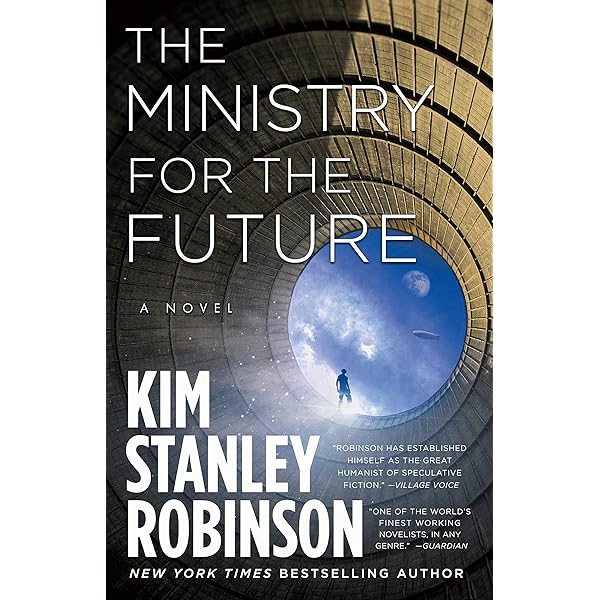Introduction:
In a world that is increasingly grappling with issues such as climate change, inequality, and political unrest, we are in dire need of visions that offer hope for the future. One such vision can be found in the pages of Kim Stanley Robinson’s latest novel, “The Ministry for the Future”. In this blog post, we will explore the key ideas presented in the book, and how they might offer a path towards a more positive future for humanity.
The Ministry for the Future: A New Institution for a New Age
At the heart of the book is the idea of creating a new institution called “The Ministry for the Future”. This ministry would be tasked with taking a long-term view of humanity’s future, and would work to steer us towards a more sustainable and equitable future. The book explores how such an institution might work, and the kinds of policies and programs it could implement. One of the key ideas is that the ministry would have a mandate to act in the best interests of future generations, rather than simply serving the short-term interests of today’s politicians and business leaders.![Ministry For The Future]: Tackling climate crisis the science fiction way](https://imgs.mongabay.com/wp-content/uploads/sites/30/2021/03/18105637/The_Ministry_for_the_Future.png)
Climate Change as a Central Challenge
As with much of Robinson’s work, climate change is a central theme in “The Ministry for the Future”. The book paints a stark picture of what could happen if we do not take bold action to address this issue, but it also offers hope in the form of practical solutions. The ministry would work to reduce greenhouse gas emissions, but also invest in technologies such as carbon capture and storage, and explore ways to remove carbon from the atmosphere. The book also highlights the need for collective action at a global scale, and explores ways in which the ministry could help to foster such action.
The Importance of Equitable Distribution
Another key theme of the book is the need for more equitable distribution of resources across the globe. The ministry would work to address issues such as poverty and inequality, by implementing policies such as a global basic income, and investing in infrastructure and education in developing countries. The book suggests that such investments would not only be the right thing to do morally, but would also be a key part of building a more stable and prosperous world.
The Power of Imagination and Vision
Throughout the book, Robinson emphasizes the power of imagination and vision in driving positive change. He paints a picture of a world where people come together to envision a better future, and work together to make it a reality. The ministry’s work is driven by a sense of optimism and a belief that a better world is possible. By inspiring people to think big, and fostering a sense of hope about the future, the ministry would help to unleash the creativity and energy needed to overcome society’s biggest challenges.
Lessons for the Real World
While “The Ministry for the Future” is a work of fiction, it offers many valuable lessons for real-world policymakers and activists. By articulating a vision for a better world, and demonstrating the practical steps needed to achieve that vision, the book could help to shape the policy debate around issues such as climate change, poverty, and inequality. It also offers a blueprint for new institutions and modes of governance that could help us deal with the complex challenges of the 21st century.

Conclusion:
In “The Ministry for the Future”, Kim Stanley Robinson offers a compelling vision of a better world, and a roadmap for how we might get there. By creating a new institution tasked with taking a long-term, global view of humanity’s future, and by investing in policies and programs that foster sustainable development and equitable distribution of resources, Robinson offers a path towards a brighter future for all. While it will undoubtedly take immense effort and collective action to achieve this vision, “The Ministry for the Future” reminds us that a better world is indeed possible – if we are willing to work towards it.